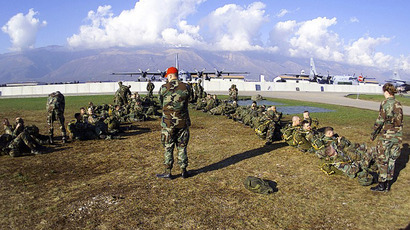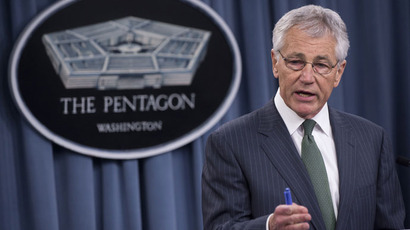Air Force lifts order to ground combat aircraft

The US Air Force has announced that many of its combat aircraft, including bombers and fighters, will start flying again on Monday after being grounded since April.
"Since April we've been in a precipitous decline with regard to combat readiness," Gen. Mike Hostage, commander of Air Combat Command, said in a statement. "Returning to flying is an important first step but what we have ahead of us is a measured climb to recovery."
Automatic federal spending cuts forced the agency to ground about one-third of its active-duty combat aircraft on April 9, which included squadrons of fighters, bombers, and airborne warning and control crafts. The Air Force’s Thunderbirds, which make up the fastest multiple-jet flight demonstration team in the world, have also been grounded for the past three months.
Many of the Air Force’s F-16s, F-22s, A-10s and B-1s have been out of operation, which concerned officials who worried that the cuts would impact the military’s readiness. The sequester forced the Air Force to cut its flying by 45,000 training hours and focus on ground training instead.
“The current situation means we’re accepting the risk that combat airpower may not be ready to respond immediately to new contingencies as they occur,” Hostage said in a statement in April.

Rather than using its aircraft for training purposes, the Air Force was forced to use flight simulators and academic training to stay within its new budget. Hostage also expressed initial concern that the cuts could impact US missions abroad, and the Defense Department warned that they could limit preparedness.
“We must implement a tiered readiness concept where only the units preparing to deeply in support of major operations like Afghanistan are fully mission capable,” he said. “Units will stand down on a rotating basis so only our limited resources can be focused on fulfilling critical missions.”
The cuts were initially meant to impact the fiscal year ending September 30, but the Air Force this week announced that the Defense Department received congressional approval to shift $7.5 billion from lower priority accounts to more important operations. The Air Combat Command at Joint Base Langley-Eustis said that $208 million of the allocated funds would ensure the restoration of flying hours, which will last for the remainder of the fiscal year ending October 1, the Associated Press reports.
Aircraft in the US, Europe and the Pacific will start to fly again on Monday. The popular Thunderbirds will also operate again, but it is unclear if they will be used in any of the air shows that were previously scheduled but cancelled after the budget cuts.















